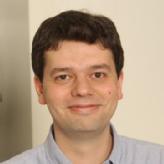WMS Events Calendar
Please see this page for MB ChB events.
BMS Divisional Webinar: Strategies to target senescence, Professor Jesus Gil, Faculty of Medicine, Institute to Clinical Sciences, Imperial College
Abstract: Cellular senescence is a complex stress response playing a causal role in many age-related pathologies. Promising strategies aimed at clearing senescent cells are potentially able to slow down the ageing process. To identify novel senolytic compounds, we have screened libraries comprising ~2,000 small molecules using systems of oncogene-induced and therapy-induced senescence. We have assessed the senolytic effect of these compounds in different cell types and in response to different senescent inducers. Interestingly, we observed that while some compounds have just selectivity to kill cells undergoing oncogene-induced senescence, others behaved as broad-spectrum senolytics. Here, we will show our progress on validation of one of these small molecules that displays conserved senolytic activity across different senescence models. So far, our results suggest the on-target activity of this compound and members of its family. Additional experiments are being conducted to gain mechanistic insights into the underlying signaling pathways involved. Moreover, preliminary results show the ability of this compound to selectively kill senescent cells in vivo in the context of natural ageing, therapy-induced senescence, and oncogene-induced senescence. Overall, our results suggest drug screens are a useful tool to identify new vulnerabilities of senescent cells and highlight the broad potential of senolysis as a therapeutic strategy.
 Biography: Jesús Gil was born in Zaragoza, Spain. He obtained his PhD studying how the dsRNA- dependent protein kinase induces apoptosis and activates NF-B, in 2000 at the Universidad Autónoma in Madrid. From 2000 to 2003 he worked with David Beach at the Wolfson Institute for Biomedical Research, University College London, where he screened for genes bypassing senescence, identifying CBX7. In January 2004, he joined Gordon Peters' group at the CRUK London Research Institute, investigating how CBX7 regulates the INK4/ARF locus. During 2005 he visited Scott Lowe's laboratory at Cold Spring Harbor, New York, developing models to study CBX7 function in vivo. Since Nov. 2005 he leads the Cell Proliferation Group at the MRC London Institute of Medical Sciences (MRC LMS) were his main interest is to understands how senescence is regulated. His laboratory studies the molecular pathways regulating senescence and the senescence-associated secretory phenotype (SASP) and their pathophysiological implications. To this end they use different mammalian systems of senescence and a variety of strategies to perform functional screens. The ultimate end is to understand the molecular mechanisms controlling senescence and exploit them for therapeutic benefit. In 2008, Jesús was named an EMBO Young Investigator. He got tenured in 2010 and in 2011 obtained the EACR Cancer researcher Award ’highly commended’. Since 2013 he is a Professor at Imperial College where it heads the Department of Molecular Sciences at the Institute of Clinical Sciences.
Biography: Jesús Gil was born in Zaragoza, Spain. He obtained his PhD studying how the dsRNA- dependent protein kinase induces apoptosis and activates NF-B, in 2000 at the Universidad Autónoma in Madrid. From 2000 to 2003 he worked with David Beach at the Wolfson Institute for Biomedical Research, University College London, where he screened for genes bypassing senescence, identifying CBX7. In January 2004, he joined Gordon Peters' group at the CRUK London Research Institute, investigating how CBX7 regulates the INK4/ARF locus. During 2005 he visited Scott Lowe's laboratory at Cold Spring Harbor, New York, developing models to study CBX7 function in vivo. Since Nov. 2005 he leads the Cell Proliferation Group at the MRC London Institute of Medical Sciences (MRC LMS) were his main interest is to understands how senescence is regulated. His laboratory studies the molecular pathways regulating senescence and the senescence-associated secretory phenotype (SASP) and their pathophysiological implications. To this end they use different mammalian systems of senescence and a variety of strategies to perform functional screens. The ultimate end is to understand the molecular mechanisms controlling senescence and exploit them for therapeutic benefit. In 2008, Jesús was named an EMBO Young Investigator. He got tenured in 2010 and in 2011 obtained the EACR Cancer researcher Award ’highly commended’. Since 2013 he is a Professor at Imperial College where it heads the Department of Molecular Sciences at the Institute of Clinical Sciences.
